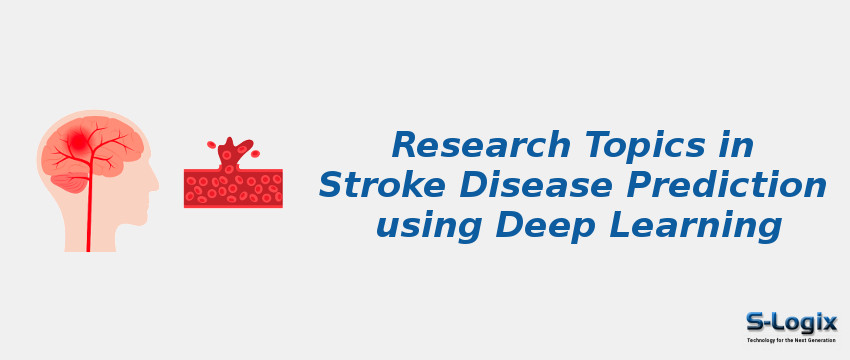Stroke Disease Prediction refers to using data/information and advanced computational techniques, such as machine learning and deep learning to forecast the risk of an individual experiencing and severity of a stroke event.
Stroke is a medical condition in which the blood vessels in the brain rupture, causing brain damage. Symptoms may emerge if the delivery of blood and other nutrients to the brain is disrupted. The leading cause of death and disability worldwide, according to the World Health Organisation (WHO).
Early detection of stroke warning symptoms can help lessen the severity of the stroke. Various machine learning models have been created to predict the chance of a brain stroke happening. This employs a variety of physiological indicators and machine learning methods to train several models for reliable prediction.
Stroke prediction models leverage multiple data sources including medical history, clinical records, imaging data, physiological data, and more. These models analyze the data to identify patterns, risk factors, and early indicators associated with stroke occurrence.
Early Detection: Identifying individuals at risk of experiencing a stroke before the event occurs, enabling timely intervention and preventive measures.
Risk Assessment: Quantifying an individual risk of stroke based on their health profile and medical history aids in healthcare decision-making and lifestyle management.
Severity Estimation: Assessing the severity of a stroke event when it occurs, helping healthcare professionals determine the appropriate treatment and care strategies.
1. Clinical Assessment: Healthcare professionals like doctors and nurses conduct a clinical assessment of patients to evaluate their neurological status, which includes checking for symptoms, vital signs, and neurological functions. Specific assessments, such as the NIH Stroke Scale, were used to quantify a stroke severity.
2. FAST Test: The FAST acronym is a simple tool for recognizing the most common signs of a stroke,
Feature Selection: It is difficult to determine which features or risk factors are most important for predicting strokes. Determining which variables to include in the predictive model requires domain expertise and data analysis.
Temporal Aspects: The temporal aspects of risk factors should be considered when predicting strokes. Models must consider these changes because some risk factors may change over time.
Managing Missing Data: Predictive model accuracy can be impacted by missing values frequently present in clinical datasets. Appropriate techniques for handling or imputing missing data are required.
Constant Monitoring: The risk of stroke is not static; factors such as aging, changes in lifestyle, and medical procedures can cause it to fluctuate over time. It can be difficult to keep track of and update risk predictions constantly.
Integration with Healthcare Systems: It can be logistically difficult to implement stroke prediction models in healthcare systems and ensure healthcare providers use them effectively.
Regulatory Compliance: Developing and implementing stroke prediction models is made more difficult by adhering to laws governing healthcare data, such as HIPAA.
1. Deep Learning and Artificial Intelligence (AI): Deep learning techniques such as CNNs and RNNs have gained popularity in medical image analysis and time-series data prediction. Researchers are exploring applying these AI methods for more accurate and timely stroke prediction.
2. Multimodal Data Fusion: Combining various data sources, including medical imaging (MRI and CT scans), genetic information, electronic health records, and lifestyle data, can provide a more comprehensive view of stroke risk. Research in fusing these diverse datasets is ongoing.
3. Genomics and Precision Medicine: Studying the genetic predisposition to stroke and tailoring predictions to an individuals genetic profile is a promising area of research. Personalized stroke risk assessment based on genomics and other factors is gaining attention.
4. Big Data and Data Mining: With the increasing availability of healthcare data, researchers are using big data analytics and data mining techniques to identify hidden patterns, correlations, and trends in large datasets related to stroke that can lead to more accurate predictive models.
5. Explainable AI (XAI): The need for interpretability in AI is paramount in healthcare. The XAI techniques can explain the predictions made by complex models, improving trust and adoption by healthcare professionals.
6. Longitudinal Data Analysis: Stroke risk is influenced by changes in risk factors over time. Longitudinal data analysis and modeling of the dynamic nature of these risk factors can enhance prediction accuracy.
7. Telehealth and Remote Monitoring: The use of wearable devices and telehealth platforms for continuously monitoring patients at risk of stroke is a growing area of interest. Researchers are exploring how these technologies can be integrated into predictive models.
8. Ethical and Legal Considerations: As AI-driven stroke prediction becomes more prevalent, there is a need to address ethical and legal issues related to patient consent, privacy, data security, and potential biases in predictive models.
9. Population Health and Public Health Initiatives: Researchers are examining how stroke prediction models can be integrated into broader public health initiatives. This involves identifying high-risk populations and implementing preventive measures.
10. Validation and Real-world Deployment: It is important to validate the effectiveness of stroke prediction models in real-world clinical settings. Research is ongoing on integrating these models into healthcare systems and measuring their impact on patient outcomes.
11. Stroke Subtypes and Severity Prediction: Stroke is not a homogenous condition, and researchers focus on subtype-specific and severity-specific prediction models. Predicting the type of stroke (e.g., ischemic or hemorrhagic) and its severity can guide treatment decisions.
12. Lifestyle and Behavioral Factors: Lifestyle choices, such as diet, exercise, and stress, play a role in stroke risk. Researchers are exploring incorporating behavioral data into predictive models to provide holistic risk assessments.
